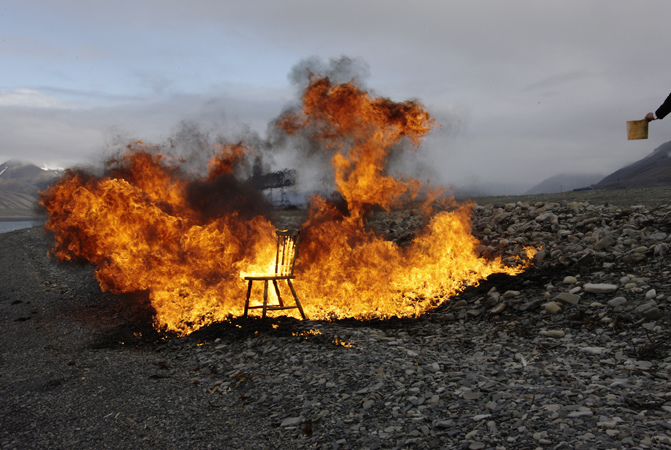Nigel Rolfe is recognized as a seminal figure in performance art, in its history and among current world practitioners.
Born in the Isle of Wight in 1950, Rolfe has lived and worked in Dublin, Ireland since 1974. He has worked intensively and made significant contributions as an artist, curator, activist and scholar. Rolfe is an elected member of the Irish association of artists, Aosdana. His work—spanning live performance, photography, video and sound—has received international acclaim and has been presented in five continents, in more than 30 countries. Rolfe has created live performances throughout Europe, in the former Eastern Block, in North and South America, in the Far East—in China, Korea and Japan. De Appel in Amsterdam, Franklin Furnace in New York, and the Institute of Contemporary Art in London were early champions of Rolfe’s installation and performance work. Major retrospectives of his work have been held at the Irish Museum Of Modern Art in Dublin and at the Musee D'Art Moderne de la Ville De Paris. He has exhibited in the Dublin, Paris, Sao Paulo, Busan, Kwangju and Venice Biennales and presented in numerous international art fairs. Rolfe is represented by Green On Red Gallery in Dublin; Galerie Polaris in Paris; and Jayne H Baum in New York.
PRACTICE
The central contention of Rolfe’s practice is that art making is a live and vital engagement. He studied sculpture and in the 1970’s used the term "Sculptures In Motion" to describe his work using materials across time—long before the term performance was put forward as any descriptor. Later these direct material engagements became highly produced and staged. Rolfe employed multi-media to articulate his largely political and activist voice as an artist. The demands Rolfe placed on large-scale production 1980s led to his ongoing research and engagement with audio and video/film production. 'Hand On Face' was shown worldwide to an audience of 600 million people in 67 countries at the Concert To release Nelson Mandela in 1988 at Wembley Stadium in London. Rolfe continues to install sound and video work produced at broadcast standard. He employs video not as a tool of documentation but to investigate and test his own physical and psychological limits, using his body as a site for challenging his limitations and revealing vulnerability.
Nigel Rolfe’s work engages sociopolitical concerns of have and have-not and fault lines in society. Since moving to Ireland he has been consistently involved in such issues both locally and directly. At the time of the death of Ann Lovett, a fifteen-year-old schoolgirl from Granard, County Longford, who died giving birth beside a grotto on 31 January 1984, Rolfe wrote Middle of The Island. Recorded by Christy Moore and Sinead O’Conner, this song has become a world music classic and epitaph as monument and marker to her short life and sad end. Rolfe’s work with sound and audio production includes a number of internationally distributed recordings that have widespread recognition, notably Lament on Real World Records, 1992. Lament, a recording of traditional musicians created as a monument to the loss of life in Irelands urban war "The Troubles", was listed as one of Rolling Stone Magazines best albums of all-time, and described as "a stunning piece of work…each track is a call to the spirits of life in the face of devastation." |
 |

